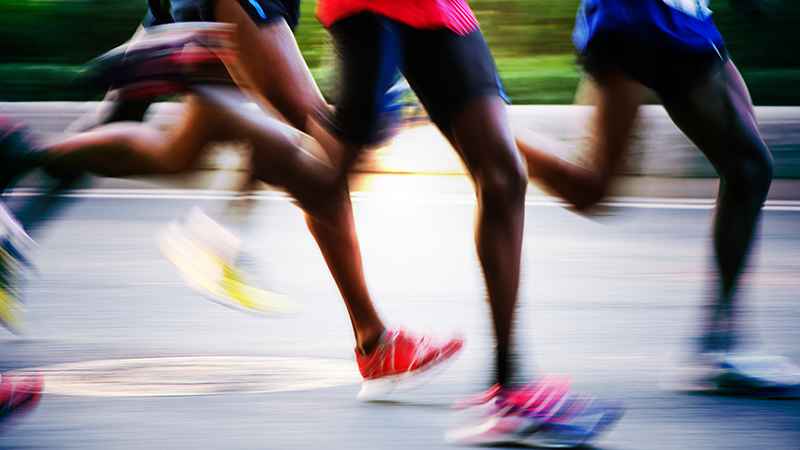
Traditionally thought of as a pre-race strategy to significantly improve performance, tapering can also help you get more from long and hard workouts while reducing the risk of overtraining
Your training is progressing well and with passing weeks your long workouts get longer. Total weekly hours are nearing their highest level. Your MAF Test, a regular sub-max evaluation, improves as you get faster at the same heart rate.
Regardless of your training philosophy, as you build to the big race or start of the competitive season, how can you best manage the increased training without risk of injury or staleness? First, some important questions:
- Can you easily fit all workouts into your weekly schedule without excess stress?
- Do you have any abnormal signs or symptoms, even very subtle ones, of physical, biochemical or mental-emotional injury?
- If you’re considering high-intensity workouts, have they been successful, enjoyable and injury-free in the past?
- With increased training, recovery needs rise too — are you getting the extra rest in the form of eight to nine hours of uninterrupted sleep?
Training tapers can play an important role in addressing these concerns by helping to improve recovery, adding muscle strength and getting the most out of key workouts.
It’s well-known that tapering works for races, but athletes should be aware it can work within the construct of a training program as well.
While most athletes know the value of a taper leading up to an important race, most go about it improperly or inadequately. Others can’t fathom the idea of not training while the rest of the pack is (supposedly). This is rooted in the no-pain, no-gain mentality, and the false assumption that tapering causes detraining. In reality, research shows a month of tapering does not adversely affect VO2max, for example, and can even improve it.
My observation in athletes I’ve worked with is tapering does not impair aerobic pace and often improves it as indicated by the MAF Test. I also found that during the taper process, the athlete’s gait can improve. This most likely is due to improved recovery and better muscle balance, and is also compatible with scientific findings that running economy can improve during a taper.
I also found a taper reduces the risk of illness often seen in athletes during high levels of training volume and/or intensity. Conditions such as the common cold, flu, asthma, allergies and others presumably are associated with increased hormonal stress, which impairs immune function.
By definition, tapering is a reduction in training volume, by around 50 percent or more, over a one to four-week period. I sometimes reduce training volume even further by up to 70 percent for some athletes during a taper, while eliminating high-intensity training.
I have defined tapering as a form of recovery, or rest, where the body gets stronger and healthier. This also can include more off days. In addition to race preparation, employing tapering during periods of higher training volume and/or intensity can help you get more out of training with less risk of injury.
During tapering, athletes can use easy walking as an alternative activity to maintain body motion and activity. Walking stimulates the body’s fat-burning system, improving fitness even further without the stress of specific and structured training. Many athletes find walking so enjoyable and effective that they incorporate it into their regular routine.
Tapering has been implemented by coaches, clinicians and athletes for many decades. But it was not until research in the late 1980s, when its value was clearly demonstrated, did it become well accepted, first with swimmers, then cyclists, then runners, rowers and others. Today we know some form of taper is important for all athletes, and comes with many benefits:
- Increased performance of up to 8 percent on race day. To demonstrate how significant this can be, let’s use a conservative 4 percent improvement: a 2:10 marathoner would potentially break 2:05; a 10-hour Ironman athlete could finish near 9:30.
- Research demonstrates that the primary benefits of a taper are increased muscle strength. Tapering can improve fast-twitch muscle function better or quicker than interval or other high-intensity workouts, including resistance training.
- While muscle protein synthesis becomes impaired to some extent during high-volume and/or high-intensity training, tapering influences genes that quickly reverse this condition.
- I found healthy athletes benefit from tapering much more — strengthening an already healthy body builds more fitness than in an injured one.
As mentioned, tapering is not just for pre-race. Creating a healthy schedule with built-in tapers allows the body to benefit more from longer or harder workouts. Whenever it’s implemented, follow a similar pattern of gradually reducing training by around 50 percent over the taper period. For example, for a three-week taper, each week’s training is reduced by over 15 percent.
Here are examples of ways to benefit from tapering throughout the year.
Taper leading up to race season, or a primary race. The longer and more important the race, the more taper, although this is not a strict rule. Tapering for a 5k track race over a three to four-week period can significantly improve strength needed for this distance. If your race season is filled with events, a long taper is a must.
Taper before the onset of higher-intensity training. This consists of two components:
- After a build-up of high-volume training, take at least two weeks to taper before implementing high-intensity workouts. Going into this training period fresh will give you a better return on your investment.
- Use mini-tapers, including off days, which are integral parts of a taper, before high-stress workouts, such as a long run.
Here’s an example of an age-group marathoner’s schedule:
Monday — off
Tuesday — 60 minutes
Wednesday — 30 minutes
Thursday — 60 minutes morning and afternoon
Friday — 30 minutes
Saturday — off
Sunday — 2 hours
Various forms of tapering can play a key role in year-round training and competitive success. This is particularly important as training volume and/or intensity increases. Taper can also play a role in improving health during these periods, and can particularly improve muscle strength to significantly increase performance on race day.
Bibliography
Harber MP, Gallagher PM, Creer AR, et al. (2004). Single muscle fiber contractile properties during a competitive season in male runners. Am J Physiol 287(5): R1124-R31.
Luden N, Hayes E, Galpin A, et al. (2010). Myocellular basis for tapering in competitive distance runners. J Appl Physiol 108: 1501–09.
Murach K, Raue U, Wilderson B et al. (2014). Single Muscle Fiber Gene Expression with Run Taper
PLoS One. 2014; 9(9).
Neary JP, Martin TP, Quinney HA (2003). Effects of taper on endurance cycling capacity and single muscle fiber properties. Med Sci Sports Exerc 35: 1875–81.
Trappe S, Costill D, Thomas R (2000). Effect of swim taper on whole muscle and single muscle fiber contractile properties. Med Sci Sports Exerc 32: 48–56








